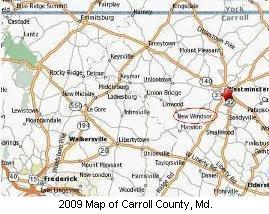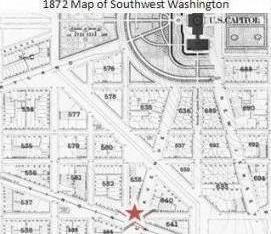Dr. William Boyd
(1820 - 13 Feb 1884)
| Chronology | Bibliography | |
 Conductors on the Underground Railroad were secretive of necessity and as a result the names of many have been lost to history. William Boyd had the misfortune to be caught, but his trial and conviction provides the evidence needed to celebrate the heroism of a "man of small stature" but of large heart and deep conviction. William was born in Ireland and arrived in Washington about 1856. He was an atheist and associated with prominent citizens of like-mind who formed a club that supported temperance and opposed slavery. One of the members was William P. Wood who had charge of the Old Capitol prison during the Civil War and later became the first head of the Secret Service (interred Range 65 Site 248). While many of the members supported only the containment of slavery, William Boyd as a radical member of the group took an active role in hiding and transporting runaway slaves. William Boyd is buried in Range 5 Site 222 at Congressional Cemetery with his wife (1904) and only daughter (1896), both named Martha M. His eldest son, William J. (1908), and his family are buried nearby. William used the title "Dr." but was a tailor by trade who was working as a peddler of produce. As such he was part owner of a wagon and a team of horses, and he had a legitimate reason for making frequent trips into the countryside to obtain fresh produce. His wagon was described as having "a space in the back part of the wagon where the negroes were concealed with a curtain drawn across in front of them; the curtain was of black cloth, and was so arranged that when one looked in at the front the cloth appeared to be against the extreme back part of the wagon."  Dr. Boyd was convicted of 2 counts of larceny (stealing slaves) and sentenced to 14 years. On October 3, 1861, however, President Lincoln signed a pardon stating in part: "And whereas the said William Boyd has now served out one year and eight months of his said term of imprisonment and conducted himself in a very exemplary manner during his confinement, and it has been made to appear to me that he bore a good character previous to his conviction for these offences; And whereas fifty four members of the Congress of the United States together with all the officers of the Penitentiary and a number of highly respectable citizens of the District of Columbia have earnestly besought me to extend the Executive Clemency to the said William Boyd; Now, therefore, be it known that I, Abraham Lincoln, President of the United States of America, in consideration of the premises divers other good and sufficient reasons me thereunto moving and have granted and do hereby grant unto him the said William Boyd a full and unconditional pardon."
 Dr. Boyd was elected to the Board of Common Council in 1869 by a large majority of African American voters grateful to him for his service to their cause. He served one year during the mayoralty of Sayles Bowen (interred Range 84 Site 102), a well known supporter of education for black children. Dr. Boyd continued to work as a merchant of herbal medicines and produce up until 10 months before his death, when he suffered a stroke. He was an invalid at the time of his death in 1884. | ||